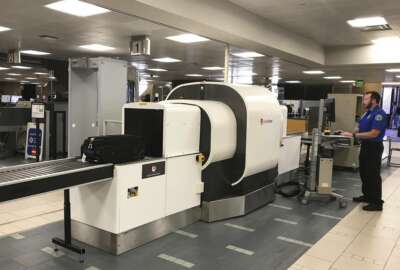
House sets its sights on DHS guns, tech, cybersecurity
House lawmakers are looking for assurances from the Homeland Security Department that its equipment is safe, including both firearms and security technology.
House lawmakers are looking for assurances from the Homeland Security Department that its equipment is safe, including both firearms and security technology. They also want to make sure the department is staying on top of current threats, especially cyber, and has all the information it needs to do so.
Here’s a look at a series of bills the House just passed to address these issues, among others.
Securing DHS Firearms Act
DHS has a somewhat checkered history when it comes to keeping track of its firearms, bullets and other munitions. In a 2016 hearing, Jeff Orner, DHS’ chief readiness support officer, told the House Oversight and Government Reform Committee the agency loses on average 69 firearms per year, and that 75 percent of those are due to theft.
DHS has made moves to improve how it secures its firearms to prevent theft. Orner said that after someone stole a weapon out of a vehicle belonging to Immigration and Customs Enforcement, DHS realized that most of the guns it was losing were stolen from vehicles.
To combat this, it installed gun lockers in all official vehicles and mandated that if a gun was in a vehicle without the officer, it had to be in the locker, and the car had to be locked as well.
This bill would require the undersecretary of management at DHS to issue a directive specifying just what equipment is considered a “sensitive asset,” how to properly secure these assets, and establish reporting and record-keeping requirements. It would also require a revision of the Personal Property Asset Management Program Manual, to include these new instructions, and training in the new requirements as well.
SAFE Tech Act
The Transportation Security Administration is constantly experimenting with new technologies meant to keep travelers safer, and maybe even move them through security checkpoints a bit faster. But lawmakers are looking for some added verification that the technologies will actually work the way they’re supposed to.
That’s the idea behind the SAFE Tech Act, which would require the TSA administrator to work with a third-party vendor to further test new technologies before the government purchases them. The vendor would determine the performance of the new systems, including the likelihood of detection and false alarms, as well as health and safety factors, operator interface, human factors, environmental factors, throughput, reliability, maintainability, availability factors, and interoperability.
Global Aviation System Security Reform Act
This bill would require TSA to conduct a review of aviation security standards around the world, and how they could be improved. The review would be coordinated with other DHS components, like Customs and Border Protection, and DHS’ Office of International Engagement. It would also assess any cybersecurity risk to aviation security screening equipment.
Cyber Vulnerability Disclosure Reporting Act
This bill would require the DHS secretary to report to Congress on the policies and procedures that govern DHS’ disclosures of cybersecurity vulnerabilities. It would also require the secretary to discuss instances where those disclosures were made, and how industry and organizations used that information.
DHS shares around 45,000 indicators every month through the automated program with both federal and non-federal partners. Jeanette Manfra, assistant secretary of cybersecurity and communications in the National Protection and Programs Directorate at DHS, told Federal News Radio in December 2017 that the program now has more than 200 entities — companies, or information-sharing entities representing multiple businesses — signed up to receive the information DHS shares to help prevent cyber attacks.
She said that by striving to provide not just raw information, but also timeliness and context to that information, the department has helped to stymie a number of potential threats. She said feedback from partners has indicated that DHS’ information sharing program alerted them to threats they hadn’t been aware of, and allowed them to take steps to put preventative measures in place, although it’s difficult to place a precise number on what never happened.
“We do believe that we have disrupted some potential significant events. Now it’s always hard to prove a negative, if you will,” Manfra said.
Manfra also said that that DHS is looking into automating the information sharing process.
Other bills
The Counterterrorism Information Sharing Improvement Act would give DHS access to biometric and biographic data collected by other government agencies on individuals linked to organizations associated with terrorism, and require those agencies to coordinate with DHS on how best to share that information.
The Screening and Vetting Passenger Exchange Act would require DHS to develop best practices on using passenger information for counter-terrorism screenings.
The DHS Interagency Counterterrorism Task Force Act would authorize DHS to to have its overseas task force share information and actively “combat the threat of terrorism and associated risks to the United States stemming from overseas sources of conflict or terrorism, as determined by DHS.” Meanwhile, the DHS Overseas Personnel Enhancement Act would require the DHS secretary to update Congress on the status of the overseas task force, and submit a plan to increase its efficacy in these goals.
Copyright © 2024 Federal News Network. All rights reserved. This website is not intended for users located within the European Economic Area.
Daisy Thornton is Federal News Network’s digital managing editor. In addition to her editing responsibilities, she covers federal management, workforce and technology issues. She is also the commentary editor; email her your letters to the editor and pitches for contributed bylines.
Follow @dthorntonWFED





